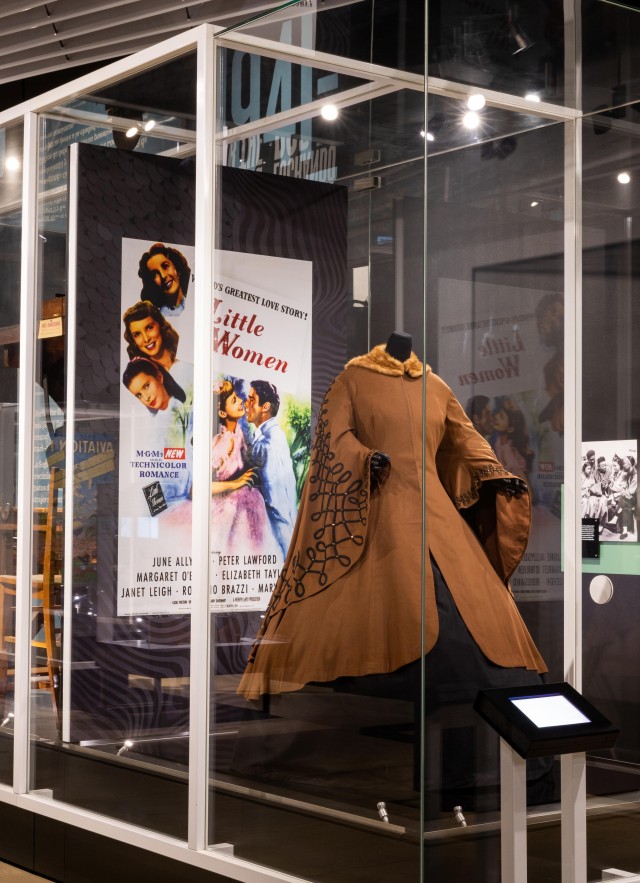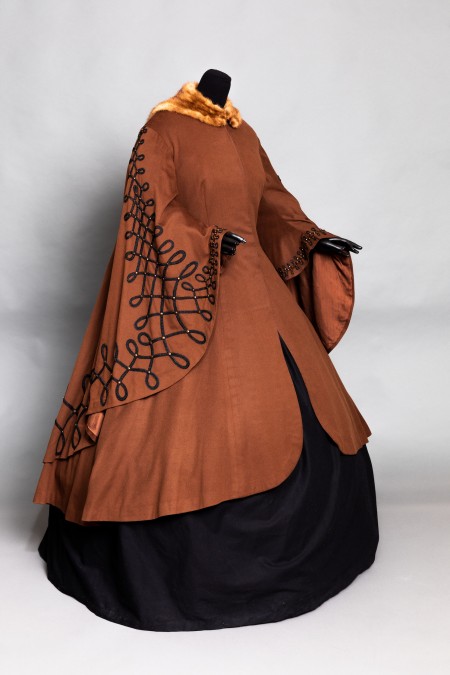A Storied Cape
Experience a little historical movie magic at NHM! A costume from the film, Little Women, is on display in our Becoming Los Angeles exhibition.

Why has the 1869 novel Little Women endured through generations? It’s probably because each generation projects its own values onto the timeless tale. It has been adapted for film and television more than a dozen times.The 1933 version was made at the height of the Great Depression; seeing a family struggling but full of love and courage resonate with audiences. The 1949 star-studded productions reflected the conspicuous consumption that took off in post-war America. The latest version, in cinemas Christmas Day, seems full of sisterhood in hoop skirts, a modern celebration of women.

Each film has its own take on the iconic fashion of antebellum life. Visitors can experience that historical movie magic when they see the cape worn by Aunt March, the girls’ wealthy relative from the1949 film, on view in Becoming Los Angeles. The garment feels luxurious in a handsome brown shade and bedazzled braids reminiscent of Civil War military coats. It’s made of fine wool and silk with a magnificent mink collar (expensive fabrics were a rarity in film because props only have to look good on camera).
But the 70-year-old piece was tearing itself apart. Hanging heavy in storage, the weight of the cape tore holes in the shoulders, and many embellishments have been lost to the ages. Thankfully, Marina Gibbons, our handy Assistant Conservator, touched up the costume to make it ready for the limelight. The repairs had to follow strict guidelines; Gibbons couldn’t put any new holes in an artifact, so she sewed into the original stitches to close a ripped seam. She used a few sparkly pieces to replace lost rhinestones. The repairs have to be somewhat obvious, a sort of letter to future conservators to say, “Hey, this is not original.” Each repair becomes a part of the story. Conservation work like this ensures that our collections will endure—just like the beloved novel—through the generations